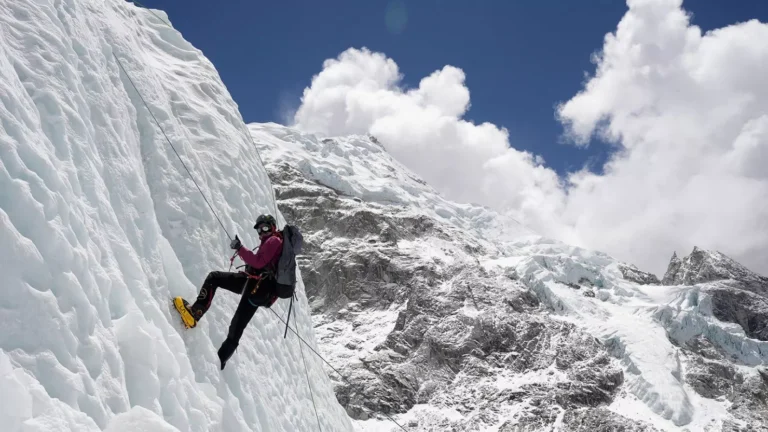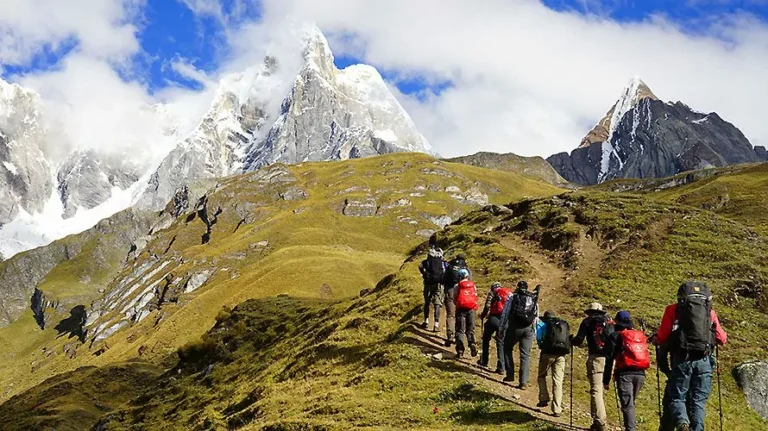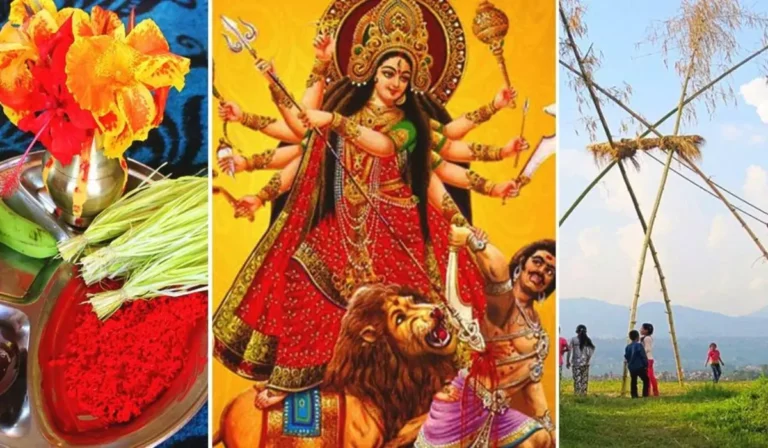- PUBLISHED
Best Time for Ama Dablam Expedition: Cost & Height Guide
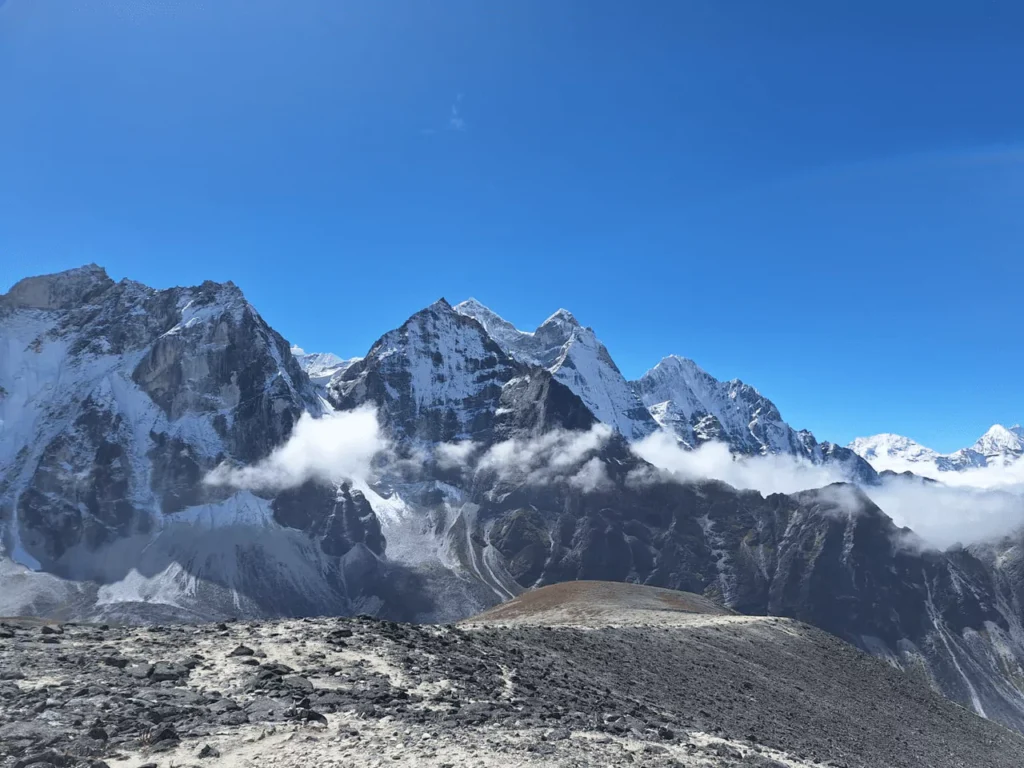
Climbing Ama Dablam is a dream for many high-altitude adventurers. Known as the “Matterhorn of the Himalayas,” Ama Dablam rises to 6,812 meters (22,349 feet) and offers some of the most breathtaking panoramic views in Nepal. This expedition is not only a test of climbing skills but also an incredible altitude experience, combining technical challenges with the beauty of the Himalayas.
With a full itinerary spanning 25–30 days, climbers enjoy a well-paced journey that includes trekking to Ama Dablam Base Camp, acclimatization stops like Namche Bazaar, high-altitude rotations, and the ultimate summit push. Many climbers trust BeThere for arranging comprehensive Himalayan expeditions, including trekking and guided climbs.
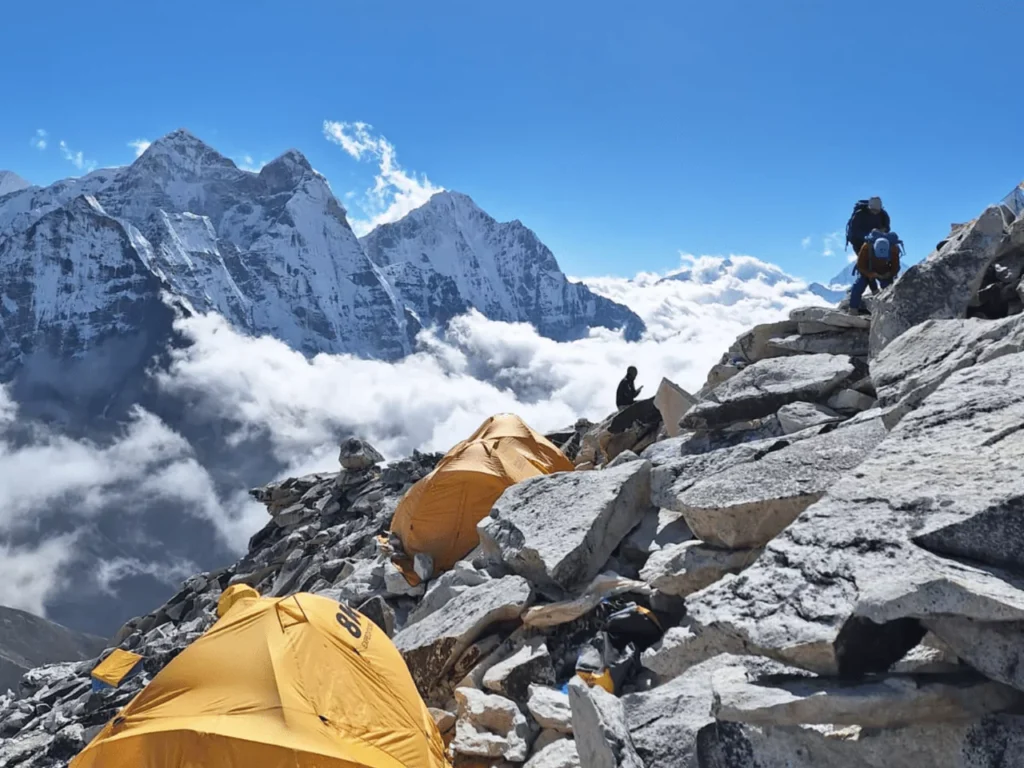
Ama Dablam Expedition Overview
Ama Dablam is a high-altitude, technical climb offering breathtaking Himalayan views. Over 25–30 days, climbers experience trekking, challenging ridges, and the excitement of summit day. If you are planning other treks in the region, trekking in Nepal provides a range of scenic routes and cultural experiences to explore.
Highlights: Height, Duration, and Costs
- Height: 6,812 m (22,349 ft)
- Duration: 25–30 days
- Difficulty: Technical climb requiring ice axes, fixed ropes, and prior climbing experience
- Cost: $6,000–$12,000 depending on expedition type and services
Key Features:
- High-altitude trekking through scenic trails and villages
- Technical sections like the rock ridge, southwest ridge, and Lobuche East
- Panoramic views of Mt Makalu, Cho Oyu, and surrounding peaks
- Summit day excitement and challenge
The expedition is ideal for altitude climbers seeking a blend of adventure, technical climbing, and breathtaking Himalayan scenery.
Climbers preparing for this expedition often follow principles from Preparing for Mountain Climbing to ensure they are ready for the technical and high-altitude challenges.
When to Climb Ama Dablam?
Ama Dablam can be climbed during spring (March–May) and autumn (September–November).
Spring Climb:
- Warmer weather and longer daylight
- Softer snow on technical sections
- Moderate crowd levels
Autumn Climb:
- Cooler and stable weather with clear skies
- Best for photography and panoramic views
- Slightly more crowded due to peak trekking season
For other trekking options, you can explore the Manaslu Circuit Trek, which also provides a fantastic high-altitude experience.
Tips: Both seasons offer unique experiences, so climbers should plan accordingly based on their personal preferences and acclimatization needs.
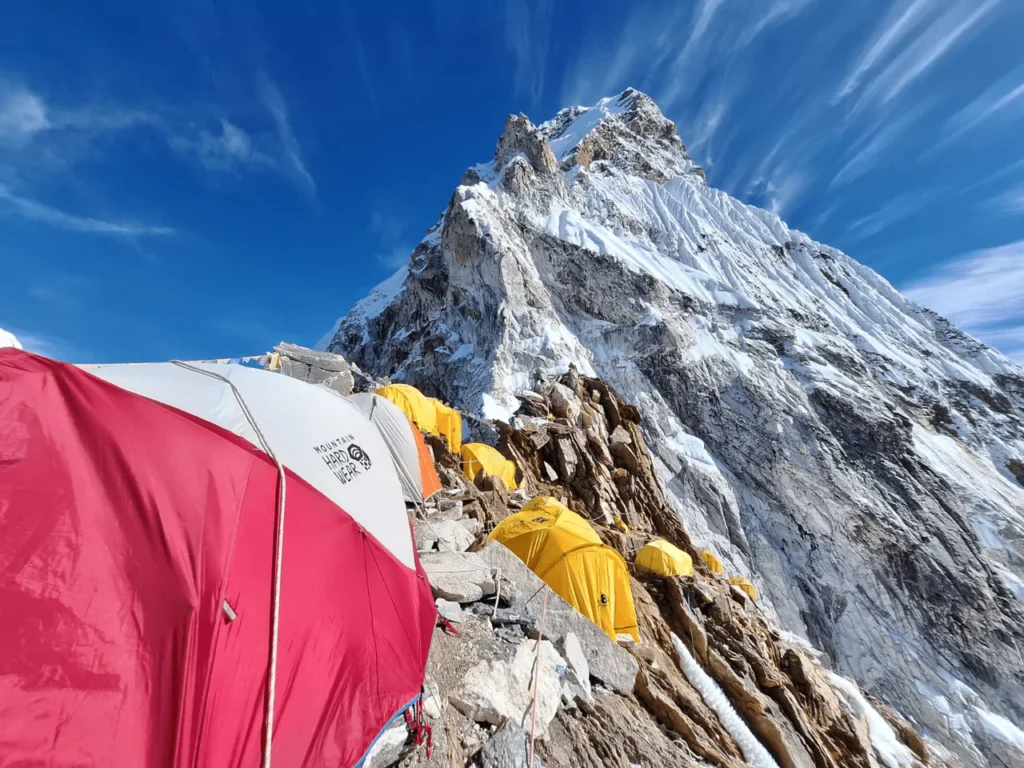
How Much Does It Cost for Ama Dablam Expedition?
Costs vary depending on the type of expedition:
- Standard Guided Expedition: $6,000–$8,000 per person
- Private Guided Expedition: $9,000–$12,000 per person
- Permit Fees: Around $1,000 (issued by the Nepal government)
Costs include:
- Certified mountain guides and support staff
- Accommodation at base camp and en route
- Technical climbing equipment (ice axes, crampons, fixed ropes)
- Trekking permits and logistics
Why This Expedition is a Must
Ama Dablam is more than a peak-it’s a Himalayan icon. Its steep ridges and technical routes challenge climbers both physically and mentally, while the surrounding mountains and vistas provide unforgettable scenery. The expedition is a perfect blend of:
- Technical climbing: Rock, ice, and mixed climbing routes
- Cultural exposure: Trekking through Sherpa villages like Namche Bazaar
- Panoramic landscapes: Stunning views of Everest, Lhotse, Makalu, and Cho Oyu
Many climbers include Ama Dablam when planning their list of top peaks for climbing in Nepal, as it combines challenge, beauty, and technical variety.
How Hard is it to Climb Ama Dablam
Ama Dablam is a technical high-altitude climb that requires:
- Proficiency in rock and ice climbing
- Experience using fixed ropes, crampons, and ice axes
- High cardiovascular fitness for the 25–30-day expedition
- Proper acclimatization at base and high camps
Key challenges include steep rock ridges, icy slopes, and long summit pushes. Climbers need both physical endurance and mental focus to successfully navigate these obstacles.
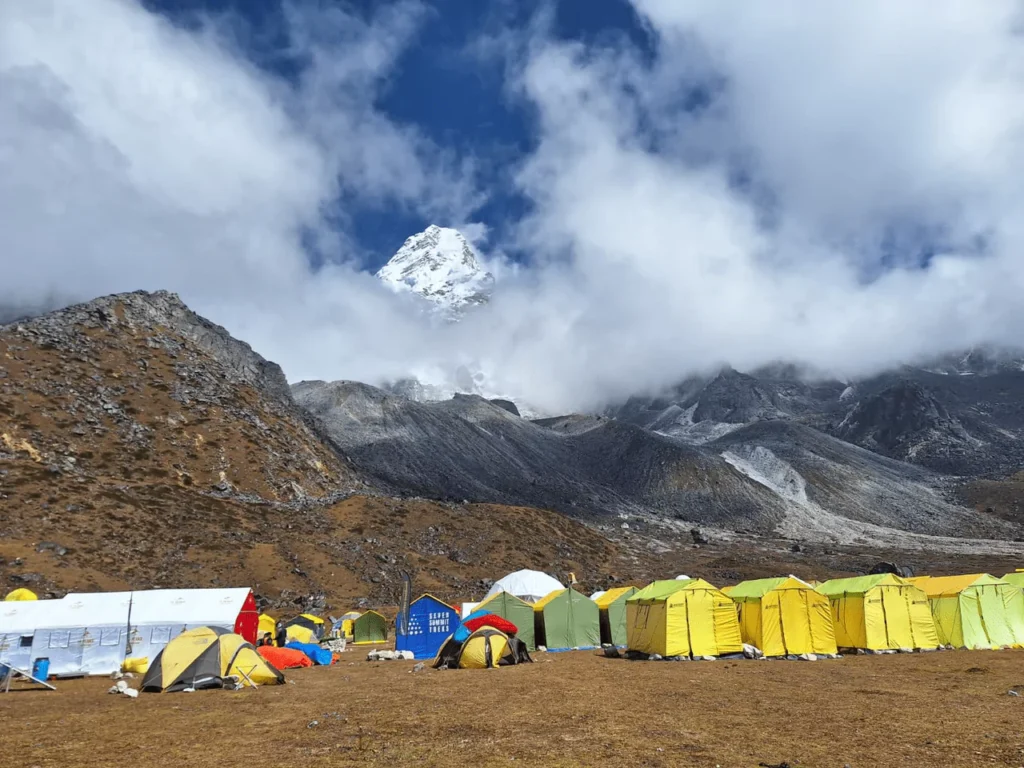
Things to Consider While Climbing Ama Dablam
- Acclimatization: Spend sufficient time at Namche Bazaar and intermediate camps to reduce altitude sickness risk.
- Guides: Certified mountain guides increase safety, efficiency, and success rates.
- Gear: Ensure all technical climbing gear is ready and in excellent condition.
- Weather: Himalayan weather is unpredictable, so plan for sudden changes.
- Fitness & Experience: Prior high-altitude trekking or technical climbing experience is strongly recommended.
The 25–30 day schedule of the expedition allows climbers to prepare adequately and climb safely while enjoying the journey.
Conclusion
The Ama Dablam Expedition is a once-in-a-lifetime 25–30-day journey for high-altitude climbers. It combines technical climbing challenges, such as navigating the rock ridge, southwest ridge, and Lobuche East, with breathtaking panoramic Himalayan views of Everest, Makalu, Cho Oyu, and surrounding peaks.
Throughout the expedition, climbers trek through scenic villages like Namche Bazaar, undergo proper acclimatization rotations, and experience the thrill of summit day. Choosing the right expedition type, having certified guides, and using essential climbing gear ensures both safety and a higher chance of success.
For climbers interested in planning their adventure or seeking more details, you can contact us to discuss expedition options, dates, and preparations.
Table of Content
Frequently Asked Questions
When to climb Ama Dablam?
Ama Dablam is best climbed during spring (March–May) and autumn (September–November). These seasons offer stable weather, clear skies, and better conditions for trekking and technical climbing.
Why do I need certified mountain guides for Ama Dablam?
Certified guides provide technical support, ensure safety on steep and icy sections, assist with route navigation, and improve your chances of a successful summit. They are crucial for handling high-altitude challenges.
How much does the Ama Dablam expedition cost per person?
The cost varies based on the type of expedition. Standard guided expeditions generally include group support, base camp accommodation, trekking permits, and essential climbing gear. Private guided expeditions offer more personalized services and flexibility. Permit fees are required by the Nepal government.
How many days do you need for Ama Dablam?
The full expedition typically takes 25–30 days, allowing sufficient time for trekking, acclimatization, technical climbing, and the summit push.
Can a beginner climb Ama Dablam?
Ama Dablam is a technical high-altitude climb, so beginners without prior mountaineering or high-altitude experience are not recommended to attempt it. Proper training and experience are essential.
Why is Ama Dablam so famous?
Ama Dablam is iconic for its steep ridges, striking pyramid shape, and panoramic views of Everest, Makalu, Cho Oyu, and other Himalayan giants. Its challenging routes and breathtaking scenery make it a dream climb for many mountaineers.
What is the success rate of Ama Dablam summit?
The summit success rate is typically around 60–70% for climbers with proper preparation, certified guides, and adequate acclimatization. Weather and individual fitness also play a role.
Can you climb Ama Dablam solo?
Climbing Ama Dablam solo is highly discouraged. It’s a technical and high-altitude climb where certified guides and support staff are essential for safety, navigation, and logistics.
Need help choosing a trail?
Connect with a local and plan your perfect trek.

